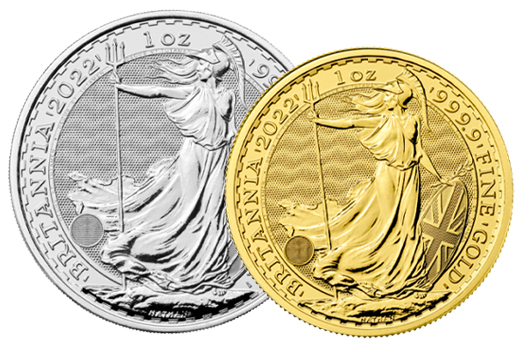
Traditionally, gold has been cited as a hedge against inflation, a precious metal that rachets up in value when prices rise out of control. Such an assumption misses the reality, which is that gold actually appreciates in value in the long term, a window of time few have time to consider, allowing it to maintain its value. Rather than reacting instantaneously upon news of higher inflation, gold captures a mood.
The perception of higher inflation is a far greater driver of gold prices than actual inflation data, creating many of the volatile upswings and downswings in the gold price itself over time. It’s easy to get lost in the short-term numbers with inflation, but it’s better to look at it as an incremental phenomenon. One year of high inflation is one thing, but the perception that high inflation could persist for a decade changes the mood entirely, and has a profound impact on the direction of gold prices.
The inflation threat
Higher inflation on a consistent basis changes the psychology of households, as it involves the ultimate erosion of the pound in your pocket. Past episodes of high inflation have often stemmed from policy error: governments and central banks overstimulating growth while trying to manufacture booms or allow recoveries to occur. An erosion of a currency’s value creates heightened political uncertainty, as the currency’s value can begin to fall.
During the 1970s, the last great bout of high inflation, a mood persisted throughout that rising prices would persist for a lengthy period. The decoupling of the US dollar from the gold standard in 1971 saw currencies such as the dollar no longer fixed to a specific unit of gold. Instead, currencies like the pound and the US dollar would endure greater swings in value, as this value was determined by the amount of paper currency printed. More dollars or pounds printed would devalue the currency, raising the chances of higher inflation.
Gold was an effective barometer of this prevailing mood in the economy, rising in value consistently during the 1970s. It would be a mistake to think those buying gold were reacting to specific releases of data on inflation during the period. In actual fact, the perception of prices rising out of control was enough to justify the upward trajectory of gold prices. It was fed by the view that the government of the day was unable to take the decisions to rein in inflation properly, and gold was a useful way of filling the vacuum and protecting wealth.
While the UK gold price drifted for a few years after the peak in 1980, the financial crisis of 2008 and further policy mistakes were enough to propel gold to new all-time highs during the 2000s and 2010s. A feeling that governments and central banks weren’t doing enough to stimulate economies fed into an atmosphere of fear, especially over a possible collapse of the Euro and slow growth in industrialised economies. After peaking in 2011, gold prices drifted lower for a few years, but from 2015 onwards, a mood of pessimism returned, allowing gold to rise in value once more.
Between 2015-20, prices doubled, as Brexit and the COVID-19 pandemic created unprecedented levels of uncertainty and economic volatility. Gold prices hit a new record high in the summer of 2020, before levelling out in more recent months. To an observer looking at the gold markets over the short term, stable prices in recent times might not seem like preserving value, but when comparing where gold prices were in 2015, the metal has managed to price in a large amount of negative sentiment during the last half-decade.
The inflationary wave
As the economy recovers from COVID-19, concerns are now turning to how policy makers cope with supply constraints in the wake of Brexit. After the economy was effectively switched off for many months at a time, demand has returned but bottlenecks in supply remain, putting upward pressure on prices. Higher inflation or even the fear of it could push people out of being able to access credit so easily, dissuading them from putting money into stocks, housing or bonds.
Rising interest rates would push more people to save than to borrow or spend, but unless interest rates are higher than inflation, savers will see their wealth eroded over time. Gold doesn’t have a yield, and wealth is protected through simple upward moves in price alone during times of inflation. Last summer saw gold prices rising to new nominal highs, showing how much scope there is for wealth to be conserved or even built up in times of economic uncertainty. The next year and decade ahead could be full of shocks in much the same way as the 2000s and the 2010s, meaning gold might have more upside than some expect.
If you’re looking to preserve your wealth in the year ahead, you’ll be pleased to know the latest range of 2022 dated gold and silver Britannia coins are now available, and the Gold Bullion Company, as an Official Partner to The Royal Mint, will be adequately stocked to fulfil your requirements. The 2022 gold Britannia is VAT-free, and follows a long line of Britannia coins from years gone by, holding not just great intrinsic value as a gold item, but also from its historical significance. The Full Britannia weighs one troy ounce, with its price reflecting a valuation close to that you would expect from buying a troy ounce bar of gold or silver.
All gold requires for another bull market is the entrenched expectation that inflation could exceed projections and that policy makers are ill-equipped to tackle it. Gold has already outperformed stocks and bonds for the last 20 years or so, and in such a scenario, this could be repeated for many years to come. All it takes is determining when the right time to buy truly is.















